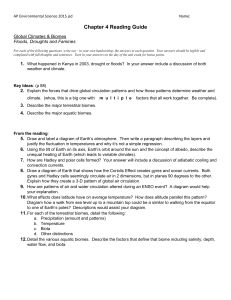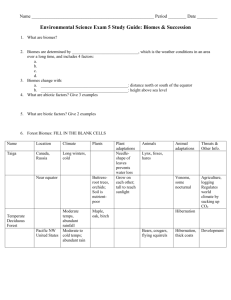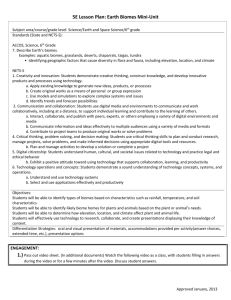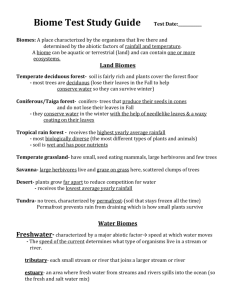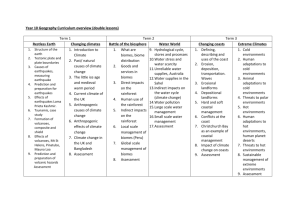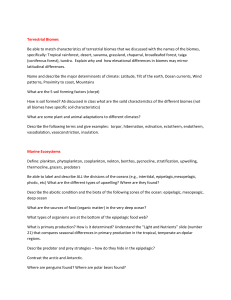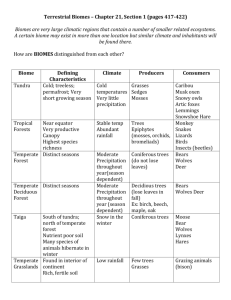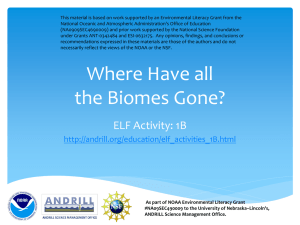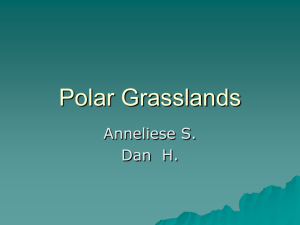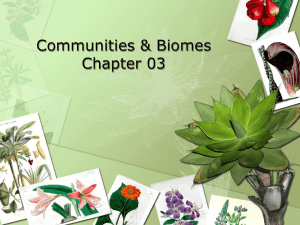Communities and Biomes
advertisement
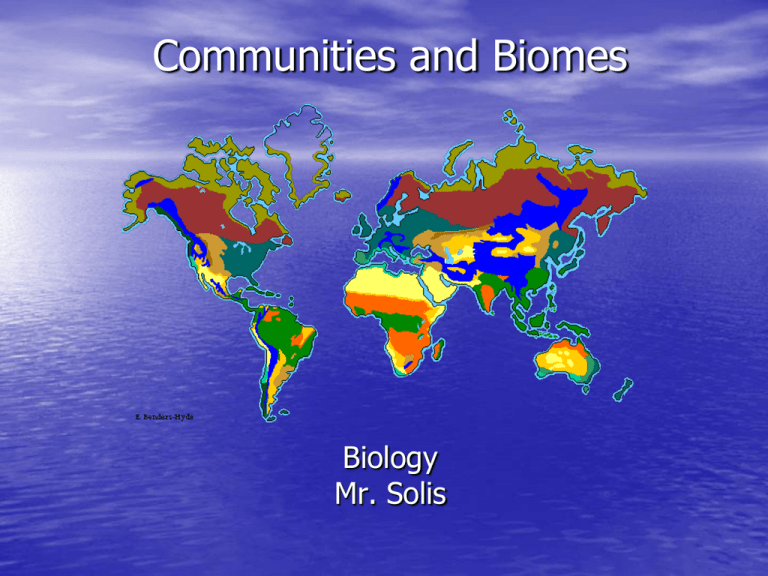
Communities and Biomes Biology Mr. Solis Life In A Community • A community is alive, and each population or factor in it contributes something important to the life of the community. • Various combinations of abiotic and biotic factors interact in different places around the world. Biomes • A biome is large group of ecosystems that share the same type of climax community. Characteristics of Aquatic Biomes • Marine Biomes- Ocean based biomes that is divided into two areas. • Photic zones- Portion of earth that is shallow enough to allow sunlight to penetrate. These consist of coastal ecosystems. Examples are bays, rocky shores, sandy beaches, mudflats, and estuaries, and coral reefs. Aquatic Biomes • Aphotic Zones- Includes the deepest and least explored areas of the ocean. Aquatic Biomes • Estuaries- a coastal body • of water, partially surrounded by land, in which freshwater and saltwater mix. These areas are thick in grasses which trap lots of food and become fish nurseries. – Example: The Arroyo The Effects of Tides • Intertidal Zones- The portion of the shoreline that lies between the high and low tides. These areas have high levels of sunlight, nutrients, and oxygen. Freshwater Biomes • Ponds- lots of plant life due to its shallow water which allows plenty of sunlight t penetrate to the bottom of the pond. • Lakes- Lots of plant life along the edge of the lake. This is due to shallow water and plenty of sunlight. • Rivers and StreamsContains lots of nutrients because of run offs, but very difficult for plant life to grow due to its constant flow. Terrestrial Biomes • These Land Biomes are based on – Latitude – Climate • Rainfall • Temperature Tundra • A treeless land with long • summer days and short periods of winter sunlight. Conditions – Never rises above freezing – Permanently frozen layer – Topsoil so thin it can’t support life • Life – Grasses, short shrubs and cushion plants – Small mammal – Caribou, Musk oxen, reindeer Taiga • A continuous belt of coniferous forest. • Conditions – Are somewhat warmer and wetter – Long severe winter and short mild summers • Life – Abundance of trees ( more food and shelter for life) – Lynx, snowshoe hare, caribou, moose and migratory birds. Desert • The driest biome, a • region with sparse to nonexistent plant life. Conditions – Less than 25 cm of rain – Hot during day cold during night. • Life – Drought resistant trees, shrubs and grass – Annual plants that germinate during sporadic rainfalls. – Nocturnal animals – Hawks, coyotes and owls. Grasslands • Large communities covered with rich soil, grasses and similar plants. • Conditions – 25-75 cm of precipitation – Experience dry seasons – Summers hot and winter cold • Life – Grasses – Some trees found near streams. – Grazing animals – Prairie dogs, foxes, insects, birds, reptiles. Temperate Forest • Are dominated by broad • leaved hardwood trees that lose their foliage annually. Conditions – 75-150 cm precipitation per year – Temperate weather • Life – Deciduous trees – Bears, rabbits, migratory birds. Rain Forests • Have warm temperatures, wet weather, and lush plant growth. Located near the Equator. • Conditions – Average temp: 25ºC – Average rainfall: 400 cm per year • Life – Diverse Group of species due to an abundance of habitats. – Three major stories Canopy- tree tops Understory- below canopy and above ground Ground- forest floor

